2015 was a massive year of change for Japanese Whisky though let’s start with the one thing that definitely hasn’t changed, the stratospheric prices of some Japanese whisky. This is really a continuation of what has been happening for a few years now but there were also record prices paid for a single bottle and a single lot at auction. Hanyu and Karuizawa continue to lead in this respect but really, any single cask or limited release Japanese whisky from all distilleries are not going to be cheap. That’s the halo effect cascading down from the “big” two. Over the last 12 months from my observations, prices have still been on an upward trend overall. Prices must be nearing a practical limit though except for most sort after rarest/oldest Japanese whiskies.
So why have the prices of Japanese whisky been outstripping their Scottish cousins of comparable age, and quality. Well I use the term quality in relation to how they are rated by both whisky writers and whisky enthusiasts in general, using a point scoring system out of 100. I often read comments from punters such as why would I buy a Japanese Whisky that has a rating of 90/100 for many times the prices of a comparable Scottish whisky. The first answer I would give is rarity. Wait a minute you may say, isn’t a single cask of 300 bottles of Scottish whisky from a closed distillery as rare as a comparable single cask from a closed Japanese whisky? Only in relation to the number of bottles produced from those casks. If you check out whiskybase the entire number bottles from the 21 Japanese whisky listed is 1732. Scotland has 157 distilleries and Macallan alone has 1860 bottlings listed, Caol Ila almost 2500. Closed distillery Port Ellen as another example has 970 bottlings listed and has a similar overall rating to Karuizawa which has the highest number of bottles listed of any of the Japanese whisky distilleries at less than half of Port Ellen, 400. Now I have no idea how many casks of Port Ellen are left but we all know that there are very few casks of Karuizawa left in relative terms and even less of Hanyu. I can only recall 1 single cask bottling of Yamazaki this year and none from Hakushu. Rarity from my observations will always outstrip quality when it comes to prices and Japanese whisky, especially rare and single cask whisky, is and ever will be far rarer than rare and single cask bottlings from Scotland. Supply and demand!
Another reason for the high prices of Japanese Whisky is the markets where it can be bought. There is a certain arrogance in the west that trends and opinions that are found there are universal. The fact is Asia sets it own trends. Cashed up buyers in Asia love Japanese whisky and they also do their homework. They know the rarity value of Japanese whisky. Now even with the Chinese economy slowing down and dragging other Asian economies with it, the number of people with a fair amount of disposable income is growing. We are also talking about an area with billions of people especially if your include India which happens to have the largest middle class in the world. Ok, so the middle class probably isn’t spending a couple of grand on a bottle of whisky but if there is middle class of 400 million in that country the upper middle and wealthy classes will also be large in size. Plenty of cash to splash. There is also a cultural aspect where it is prestigious to have rare stuff and the expense be damned. I’m sure that many would be surprised that some of the biggest prices paid at the record breaking auction for Japanese whisky were from Malaysia and Indonesia.
So what about the prices of standard age statement Japanese Whiskies. Unfortunately as Nikka are no longer producing age statement single malt whiskies, those standard age statement whiskies that are still left are all selling for anything between two to 5 times(in the case of Yoichi 20YO) the retail price on the resale market. I’m not even sure how long age statement Hakushu and Yamazaki single Malts will be available. The largest discount liquor store chain in Australia were selling 10 different bottling’s of Japanese Whisky. For a few weeks now they have been out of stock of Yamazaki 12 and Hibiki 12 and 17 year olds and no notification of a restock.
One positive outcome of the big players dropping some of their age statement whiskies and the general rise in popularity of Japanese Whisky in it’s homeland is that the smaller Japanese Whisky Distilleries are not only surviving but thriving. The domestic market alone can support these distilleries which gives them the opportunity to expand outside of Japan. The previously mentioned Australian discount liquor store is now stocking Mars Awai Tradition blended whisky. This would have been inconceivable even a year ago.
Things get a little tougher when I cast a critical eye over the offering’s from Nikka and Suntory that have replaced or are supplementing their whisky ranges.
Hibiki Harmony is fairly insipid and Chita Single Grain NAS is young and a bit rough around the edges.
Yamazaki Distillers Reserve NAS I think is an excellent representation of both the Yamazaki distillery and Japanese whisky in general. I’ve bought and opened 4 bottles of the Yama NAS this year. Hakushu Distillers Reserve NAS is lacking if you have tried Hakushu 12 or even the old 10YO.
Nikka Coffey Malt NAS I found a bit strange but I know others who really like it and the Nikka Coffey Grain NAS is a far more convincing effort than the Chita Single Grain NAS. I would certainly buy another bottle of the Nikka Coffey Grain.
Miyagikyo Single Malt NAS is nice and I’m not unhappy about having a couple of spare bottles. Yoichi Single Malt NAS in a big disappointment and I wish I would have tried before I loaded up on spares. I would add that I prefer Nikka From the Barrel, Nikka Pure Malt White and Nikka Pure Malt over both of the new Single Malt NAS bottling’s.
It’s going to be very interesting to see how Nikka and Suntory are going to manage expectations with these new bottling’s and in the case of Nikka with no standard age statement single malt whiskies at all. I mean, if you were just getting into Japanese whisky after reading reviews of Yoichi/Miyagikyo Age Statement bottling’s and you bought a bottle of the NAS, you really would be asking what all the fuss was about and just go buy a 10-12YO Scottish single malt instead. If your already a fan of Japanese whisky and can’t afford hundreds or thousands of dollars on the rare stuff(I’m one of those by the way), you will still be disappointed at least in regards to Nikka and Suntory stuff. Will this have been a big expansion proceeded by a big contraction for Japanese whisky from Suntory and Nikka. My only saving grace is that I bought enough when it was cheaper and can probably get through with what I already have until age statement SM whisky hits the stores again.
Of the other open distilleries I tasted some fine whiskies from Kirin, Akashi, Mars and Chichibu in 2015 though I wasn’t a fan of Mars Cosmo. Chichibu had quite a few bottling’s this year, unfortunately most were only available in Japan. I find Kirin under rated but again hard to find outside of Japan and I have to hand it to the little White Oak(Akashi), who despite their tiny output happily experiment with different cask maturation. Do a pretty good job of it as well.
So there you have it, some constants still in play such as the price of some Japanese whisky, and some huge changes where the ramifications are still unknown. Japanese whisky has also finally become a big hit domestically after many years in the doldrums.
Wishing all the readers of the Japanese Whisky Review and safe and happy festive season and a great 2016.

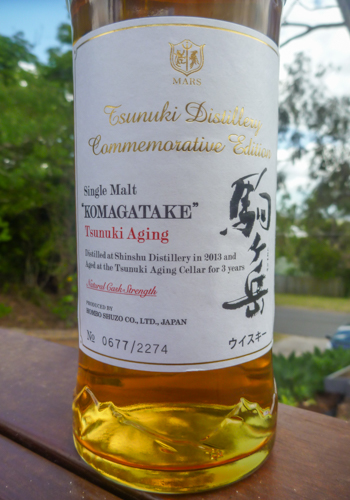 Nose: This is Heavily Peated Whisky by Japanese standards. If you have tried any of the Chichibu ‘standard’ peated bottling’s, this is peated to at least that level but the Mars peat is much earthier. Dried mushrooms, bay leaves, ripe apricot, honeycomb, oregano, antiseptic, lemon, vanilla. Water ups the vanilla.
Nose: This is Heavily Peated Whisky by Japanese standards. If you have tried any of the Chichibu ‘standard’ peated bottling’s, this is peated to at least that level but the Mars peat is much earthier. Dried mushrooms, bay leaves, ripe apricot, honeycomb, oregano, antiseptic, lemon, vanilla. Water ups the vanilla.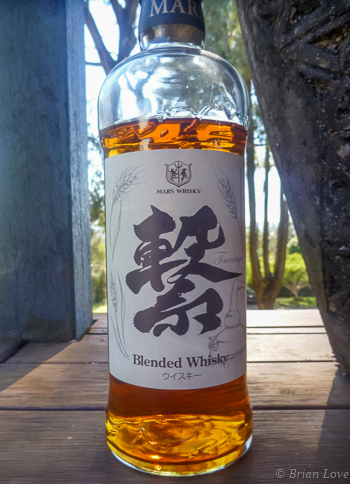 Nose: Raisins, stewed apples, figs, malt, marzipan, wood chips, rhubarb stalks, orange peel.
Nose: Raisins, stewed apples, figs, malt, marzipan, wood chips, rhubarb stalks, orange peel.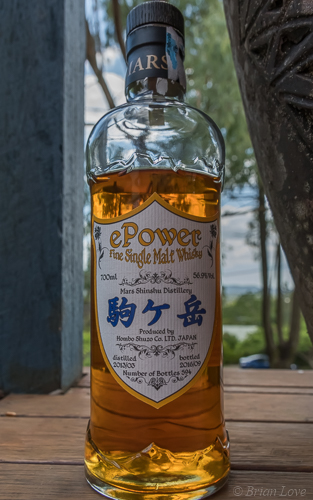 Nose: Banana, vanilla, toffee, pear flavored lozenges, lemon zest, wood chips, apricot juice. There is a fair amount of wood influence for a young whisky. Water adds shellfish and heather.
Nose: Banana, vanilla, toffee, pear flavored lozenges, lemon zest, wood chips, apricot juice. There is a fair amount of wood influence for a young whisky. Water adds shellfish and heather. Nose: If it did not say Sherry Cask on the label I would not pick this as a sherry cask matured whisky. Vanilla, toasted oak, grapefruit, orange zest, maple syrup on toasted crumpets, apple sauce. With water added a floral note and white peach emerge.
Nose: If it did not say Sherry Cask on the label I would not pick this as a sherry cask matured whisky. Vanilla, toasted oak, grapefruit, orange zest, maple syrup on toasted crumpets, apple sauce. With water added a floral note and white peach emerge.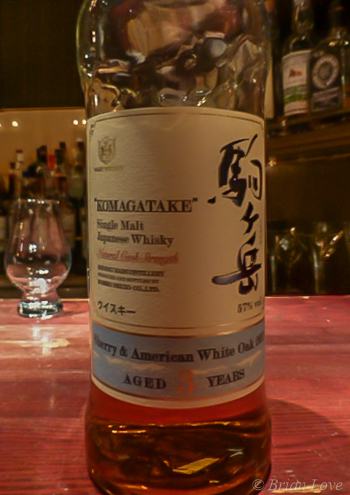 Nose: Sherry, orange jus, cereal notes, a little struck match, bread dough, mouldy orange peel, grapefruit.
Nose: Sherry, orange jus, cereal notes, a little struck match, bread dough, mouldy orange peel, grapefruit.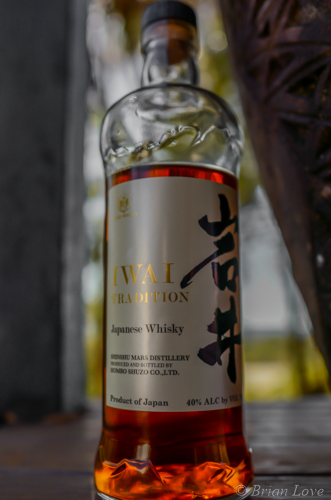 Nose: Honey, sweet lemon, fresh cut timber, raisins, caramel, dried pears, putty.
Nose: Honey, sweet lemon, fresh cut timber, raisins, caramel, dried pears, putty.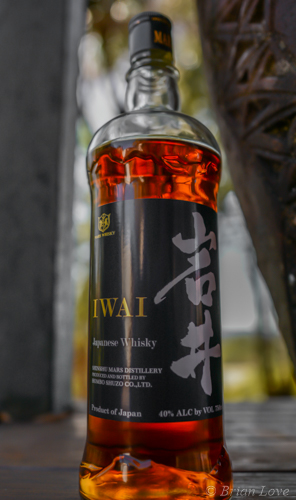 Nose: Sharp and acetone. Lemon, chlorine, sawdust, cheap bourbon.
Nose: Sharp and acetone. Lemon, chlorine, sawdust, cheap bourbon.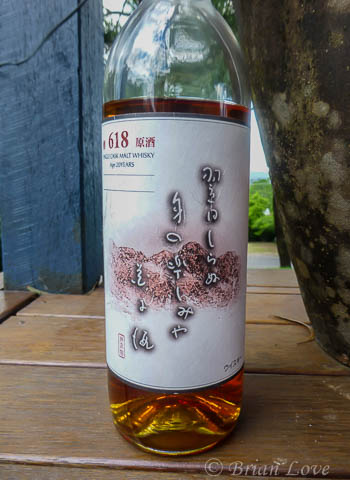 Nose: Big hit of banana to start. Pineapple, peaches, butterscotch, walnuts, sawdust, honeyed porridge, guava, papaya, caramel, oak. Water adds and incense/sweet tobacco note.
Nose: Big hit of banana to start. Pineapple, peaches, butterscotch, walnuts, sawdust, honeyed porridge, guava, papaya, caramel, oak. Water adds and incense/sweet tobacco note.